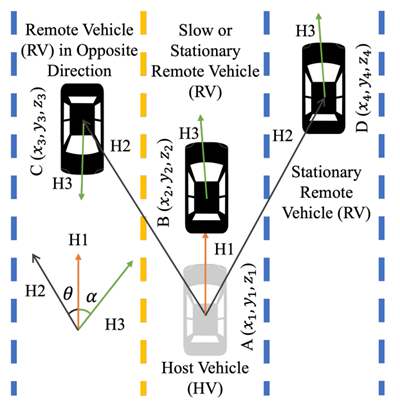Advantages:
- V2V warnings reduce accidents, enhancing road safety with advanced relative angle technology.
- Integrating relative angles boosts alert accuracy for more precise and effective warnings.
- Simulations show algorithm adaptability in diverse multi-lane scenarios, ensuring effectiveness.
Summary:
In the realm of motor vehicle safety, accidents resulting from human errors pose significant challenges, often leading to head-on and rear-end incidents. Our research addresses this concern by harnessing Connected Vehicle (CV) technology for advanced Vehicle-to-Vehicle (V2V) warnings, utilizing the innovative concept of the relative angle derived from vehicle positions, distance, and heading angle differences.
Our technology introduces a unique approach to V2V warnings, combining the relative angle with heading angles to enhance the accuracy of alerts. Validated through simulations in the CARLA simulator, our algorithms exhibit remarkable effectiveness in generating warnings like Slow Moving Vehicle Warning (SMVW), Do Not Pass Warning (DNPW), and Stationary Vehicle Warning (SVW). These advancements, poised for integration into Connected Vehicles (CVs), promise a significant leap forward in mitigating accidents and improving overall driver safety.

Illustration depicting HV, RV, and relative angle θ for Slow, Opposite, and Stationary Vehicles.
Desired Partnerships:
- License
- Sponsored Research
- Co-Development